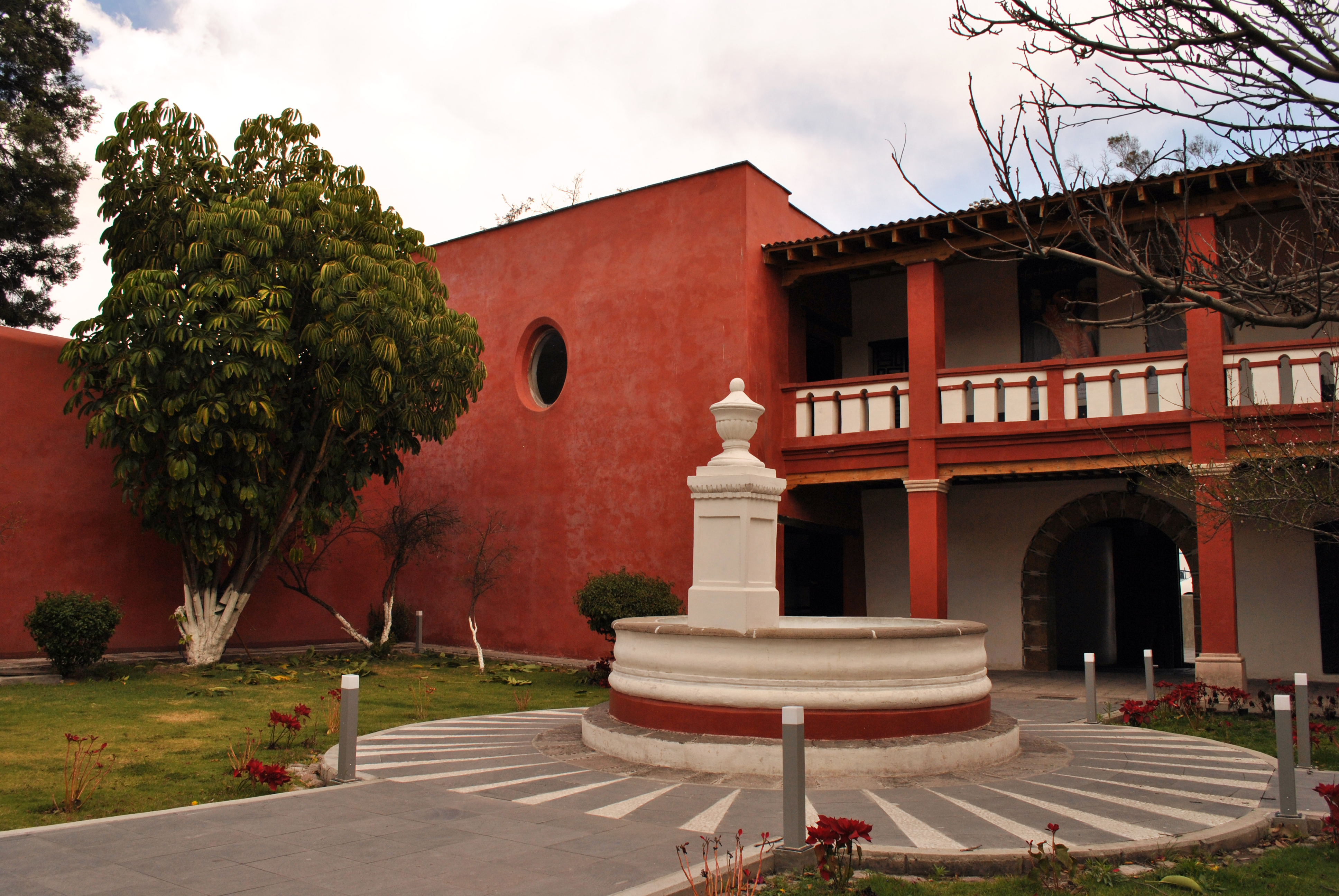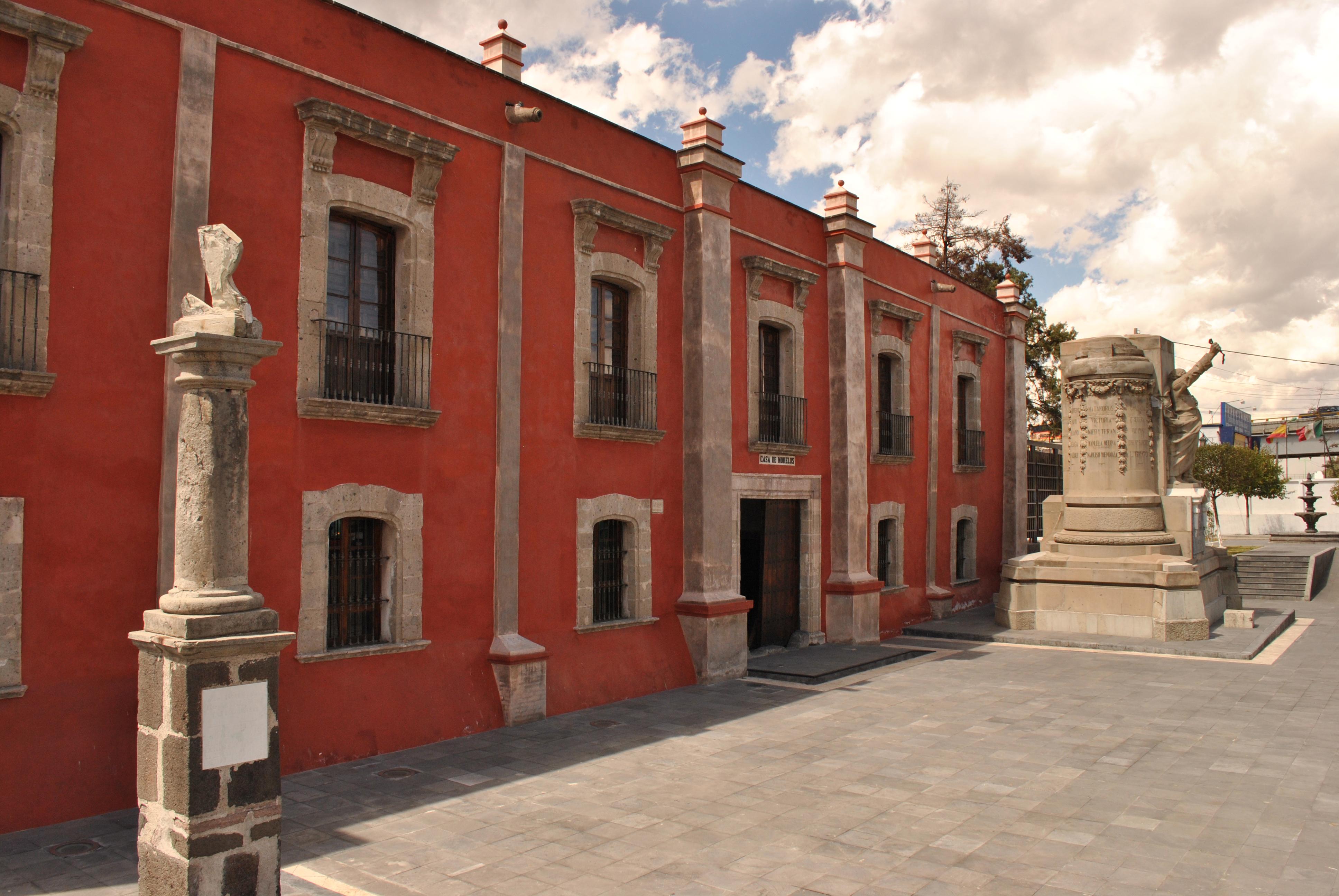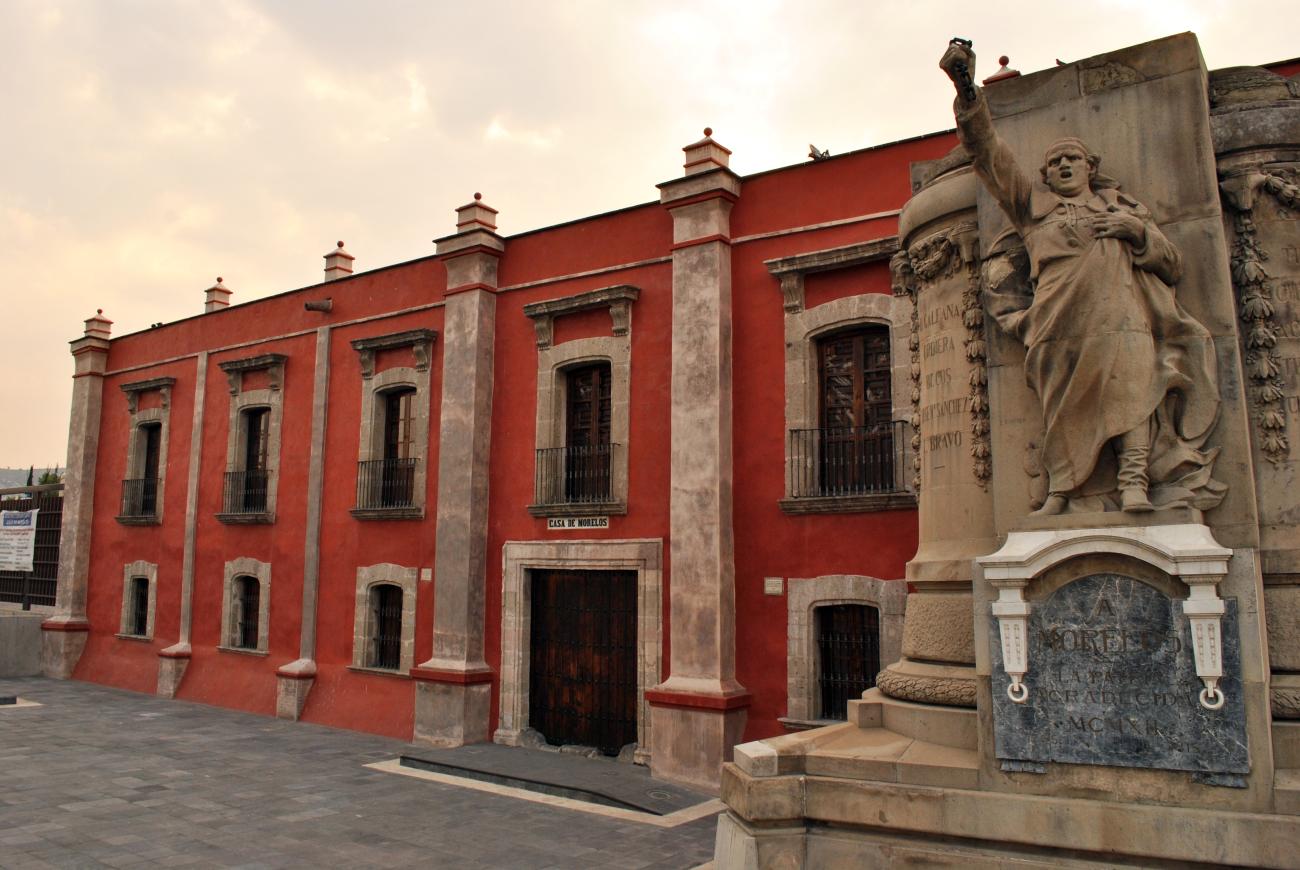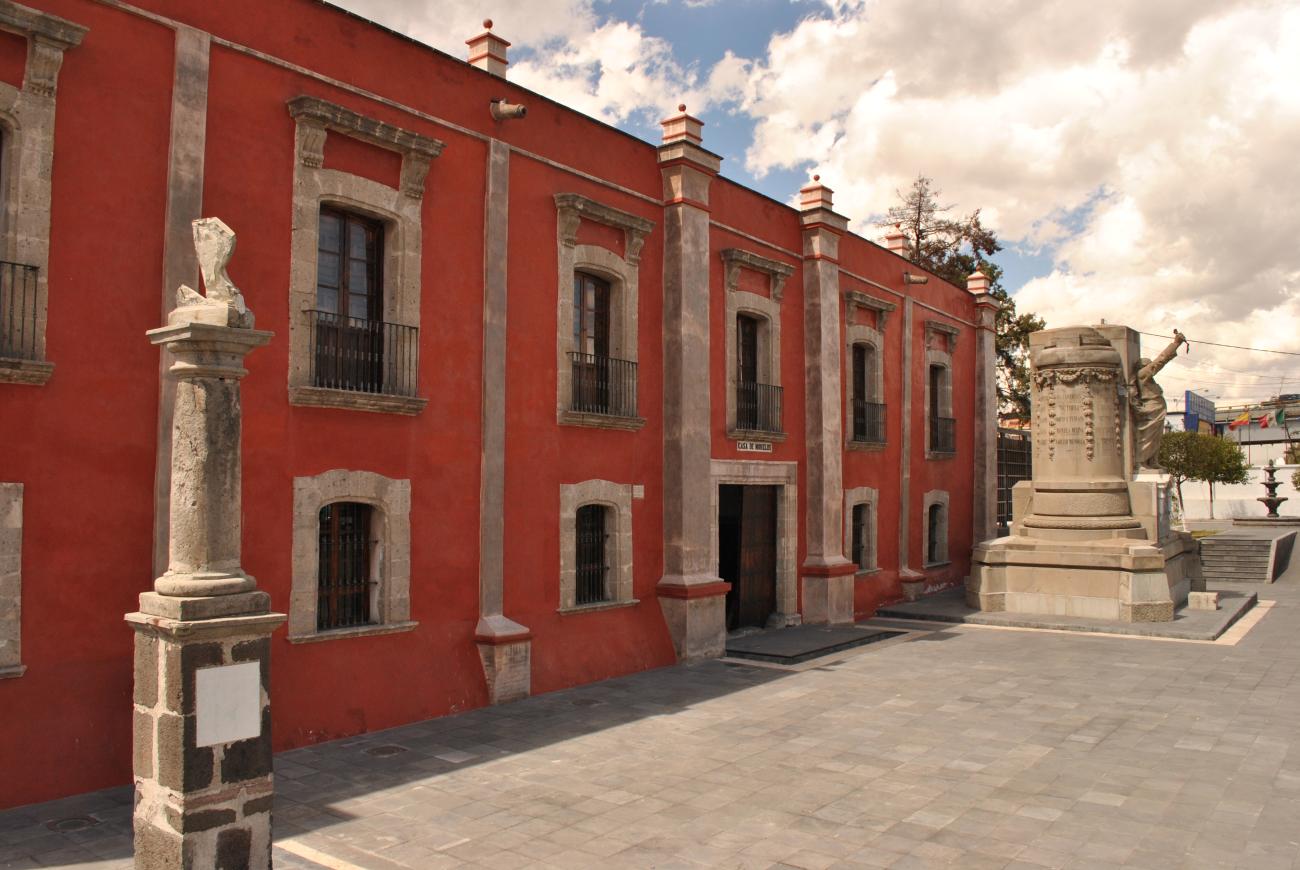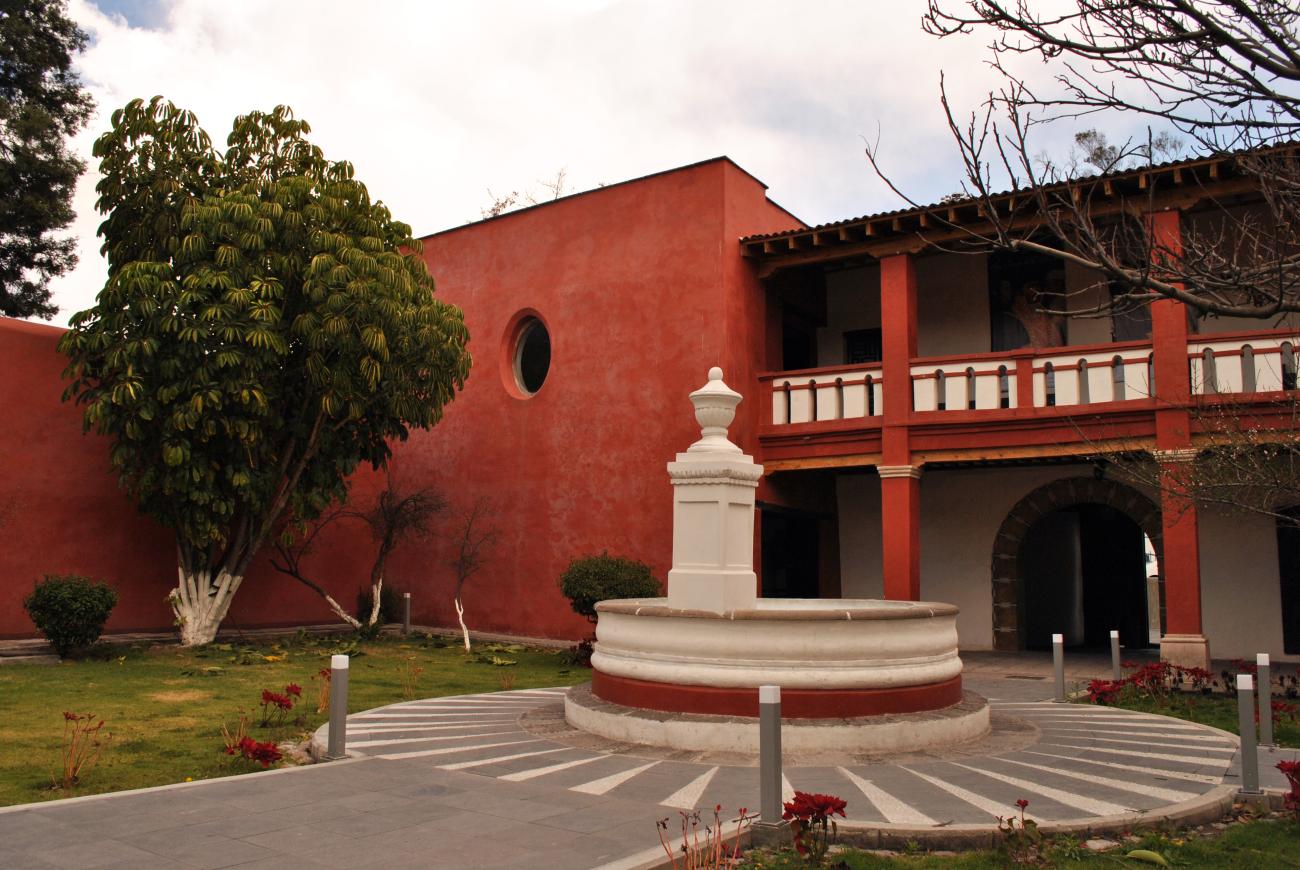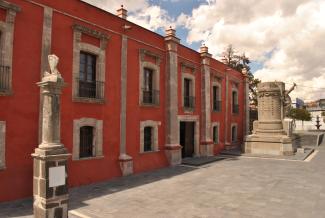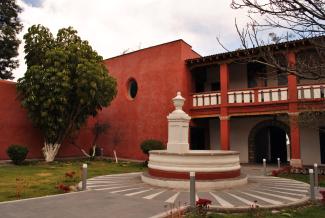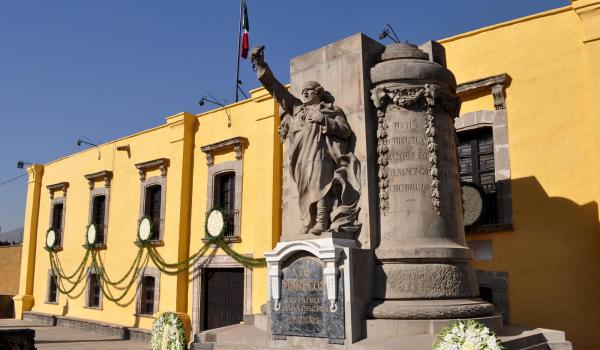El Albarradón de San Cristóbal
Historical Monuments Zone
Abstract
This site in the Ecatepec neighborhood reveals aspects of the hydraulic infrastructure in pre-Hispanic times, and is where José María Morelos y Pavón, hero of Mexican Independence, would spend his last hours of life.
The road known as El Albarradón de San Cristóbal is located in the municipality of Ecatepec, State of Mexico. This dike is believed to be one of the major elements added by the Spanish to the pre-Hispanic hydraulic system. It was used to control the waters of the lakes in the Mexican Basin and it is the only aspect of the entire system that is preserved today.
The geographical location of these lands and their position, at the southern end of the natural corridor formed by the shores of Lake Texcoco and Lake Zumpango, made the place an essential site of passage since pre-Hispanic times. At that time, as a result of the hydraulic infrastructure to prevent flooding in Tenochtitlan, a dike was built in order to separate the fresh and clean waters in Lake Texcoco and reduce the probability of flooding in the city. The Albarradón de San Cristóbal Ecatepec is a levee or albarrada that was erected by Moctezuma Ilhuicamina, the Mexica tlatoani or leader, and by Nezahualcóyotl of Texcoco. It was destroyed by order of Hernán Cortés in order to carry from one side to another the vessels that they constructed in Texcoco to attack Mexico-Tenochtitlan.
In 1604, Viceroy Juan de Mendoza ordered the reconstruction of the San Cristóbal road, after a severe flood; Fray Gerónimo de Zárate was placed in charge of carrying out the work. It was subsequently renovated in 1675, rebuilt in 1692, restored again in 1743 and reinforced in 1856 with slopes and a stone wall with buttresses. In 1863 the road was used for the wagons that came from Veracruz and those that left for the city of Pachuca. In 1900 El Albadarrón was restored again. Another modification made was to create a semicircular space used as a stopping point for stagecoaches on the north side of El Albarradón.
In the 17th century, the “Casa de los Virreyes” was built on one side of the Albarradón, which was rebuilt in the 18th century. During the struggle for the Independence of Mexico, General José María Morelos y Pavón spent his last hours of life in that house, after being sentenced to death by the civil courts of the united jurisdictions.
Morelos was shot in front of this building on December 22, 1815, and buried in the Church of Ecatepec. On the site where he was executed a monument was built in honor of his memory, designed by the architect Ramón López de Lara and inaugurated on December 22, 1912. In the early 1990s, this house became the Ecatepec Community Center, Casa de Morelos, since its main function is the cultural link with the community.
For the preservation of its original layout, as well as for the formal characteristics of the buildings along the road known as El Albarradón de San Cristóbal, the relationship between the spaces and its structure, which bear testimony to its exceptional value to the social, political and artistic history of Mexico, this area was declared a zone of historical monuments in 2001.
The Zone of Historical Monuments covers an area of 0.44 square kilometers that include buildings with historical value built during the 16th to the 20th centuries, in which different manifestations of each historical period are combined. Of these, the Chapel of San Juan, which dates from the 17th century, was used for religious worship and others for civil use such as the Bridge and Lock Gate of San Cristóbal, or the hydraulic infrastructure of the ancient city such as El Albarradón de San Cristóbal.
Capilla de San Juan Bautista o Alhualcan
It was built by the Royal Consulate in the mid-18th century, and viceroys would pass through this area before arriving in the capital. In the earthquake of May 2, 1962, this chapel suffered a crack along the vault, on either side of the sacristy.
Capilla de San Juan Bautista o Alhualcan
It was built by the Royal Consulate in the mid-18th century, and viceroys would pass through this area before arriving in the capital. In the earthquake of May 2, 1962, this chapel suffered a crack along the vault, on either side of the sacristy.
Puente de Albarradón
Compuerta 1 del Albarradón
Four or five kilometers long from Abarradón and eight meters on its western side, there are two chapel-like structures, which actually correspond to the housing of floodgates that divided the Zumpango and Texcoco rivers and controlled the flow to Texcoco, located one kilometer apart.
Compuerta 1 del Albarradón
Four or five kilometers long from Abarradón and eight meters on its western side, there are two chapel-like structures, which actually correspond to the housing of floodgates that divided the Zumpango and Texcoco rivers and controlled the flow to Texcoco, located one kilometer apart. In the 16th century, Emperor Moctezuma I ordered it to be rebuilt due to severe flooding. In 1605, further repairs were made due to flooding. In the 17th to 19th centuries, drainage works were carried out through Ecatepec, and “La casa del real desagüe” (The Royal Drainage House), now known as “Casa Morelos,” was built.
Albarradón Tramo 1
During the time of Moctezuma, a dam was built which, along with 18 others, was one of the most outstanding hydraulic works in the area. This work was carried out to prevent the water from Lake Xaltocan from invading Lake Texcoco and flooding Tenochtitlán.
Albarradón Tramo 1
During the time of Moctezuma, a dam was built which, along with 18 others, was one of the most outstanding hydraulic works in the area. This work was carried out to prevent the water from Lake Xaltocan from invading Lake Texcoco and flooding Tenochtitlán. Later, during the colonial period, the embankment was reinforced due to constant flooding. In 1604, three chapels were built for the floodgates.
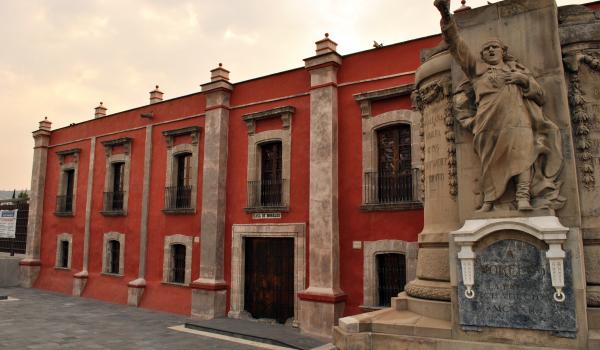
Casa del Generalisimo José María Morelos y Pavón
18th-century building. It was built as a post house by the Consulate of Mexico City; many commercial products arrived there and it provided accommodation for the Viceroys before their arrival in the capital of the Viceroyalty.
Casa del Generalisimo José María Morelos y Pavón
18th-century building. It was built as a post house by the Consulate of Mexico City; many commercial products arrived there and it provided accommodation for the Viceroys before their arrival in the capital of the Viceroyalty. Later it became the Casa del Real Desagüe (Royal Drainage House) and is now the Casa de Morelos Community Center. During the War of Independence, Generalissimo José María Morelos y Pavón was shot in this building on December 22, 1815. There are ceramic fragments from a later period, as well as pre-Hispanic burials and lithic remains that attest to a pre-Hispanic pre-existence.


